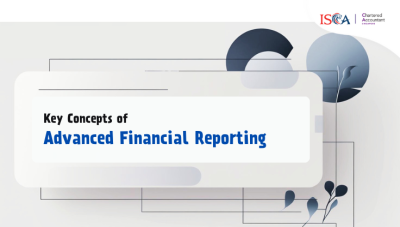
Course description
Programme Outline
Upon completion of this course, participants will be able
to:
1. Revenue from Contracts with
Customers
·
Explain the concept of satisfying a performance
obligation and the recognition of corresponding revenue and costs over time.
·
Identify the relevant revenue and costs to be
recognised in a construction contract.
·
Calculate the amount of revenue and costs to be
recognised where the expected contract outcome is a profit, loss or unknown
2. Foreign Currency Translation for a Foreign Operation
·
Identify the correct foreign exchange rates used
in the translation of a financial statement of a foreign operation.
·
Apply the translation of foreign operations
financial statement from its functional currency into the group’s presentation
currency.
·
Perform reconciliation for Foreign Currency
Translation Reserve balance to proof check translation for financial statement
of a foreign operations.
3. Impairment of Assets
·
Evaluate the impairment test for all classes of
assets.
·
Calculate the impairment losses for all classes
of assets.
·
Identify and explain the concept of a
cash-generating unit.
·
Allocate impairment losses to cash-generating
units appropriately.
4.Related Party Disclosure
· Identify
the parties considered to be related to an entity.
· Propose
appropriate Related Party transactions and balances required
5. Consolidation ( Part 1 )
·
Describe the role and purpose of consolidated
financial statements.
·
Identify and apply the criteria used to
distinguish between a subsidiary and an associate.
·
Apply the acquisition method of accounting for
business combinations (SFRS(I) 3).
·
Apply the principles in determining the fair
value of consideration transferred on acquisition date.
·
Prepare eliminating consolidation journal
entries for an acquisition of a subsidiary, on acquisition date.
·
Prepare consolidation adjustments to account for
non-controlling interests.
·
Prepare the proof of balances (analytical check)
for non-controlling interests and retained earnings balances for consolidated
financial statements.
6. Consolidation ( Part 2 )
· Prepare
post-acquisition consolidation adjustments on acquisition date fair value
differentials.
· Prepare
the eliminating consolidation adjustments relating to intra-group transactions
and balances including deferred tax adjustments.
· Distinguish
how pre-acquisition and post-acquisition reserves in preparing consolidated
financial statements.
· Prepare
consolidation adjusting entries for elimination intra-group transactions and
balances.
· Apply
the equity method of accounting for associates.
· Prepare
the elimination journal entries for intra-transactions with investment in
associate.
· Prepare
a Proof of balances (analytical check) for investment in associate.
Target Audience
This course is suitable for individuals seeking foundational knowledge in Advanced Financial Reporting


